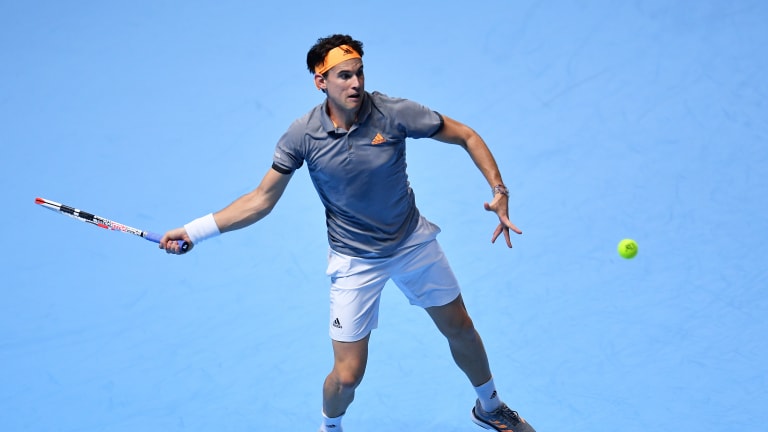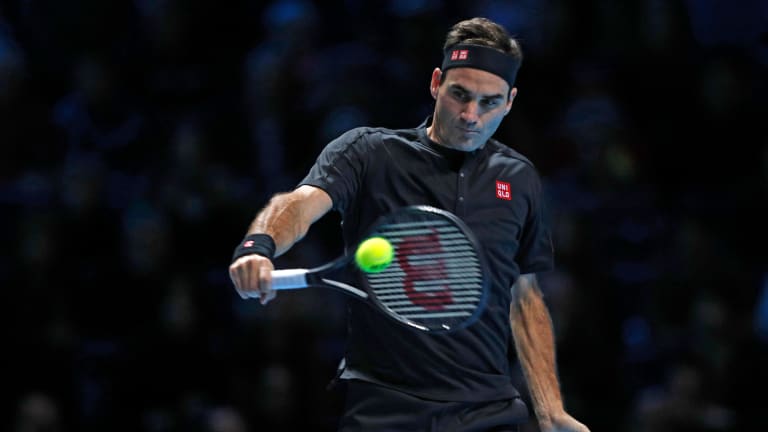ATP Finals
Thiem's risks get rewarded with win over Federer in London
By Nov 10, 2019ATP Finals
Wanted: Faster Courts
By Nov 20, 2023ATP Finals
Improving Jannik Sinner has his sights set on serving up more success next season
By Nov 20, 2023ATP Finals
New Era, Same Emperor: Novak Djokovic reigns supreme in Turin
By Nov 19, 2023ATP Finals
Record-breakovic! Novak Djokovic defeats Jannik Sinner for historic seventh ATP Finals title
By Nov 19, 2023ATP Finals
Novak Djokovic vs. Jannik Sinner: 2023 ATP Finals Championship preview
By Nov 19, 2023ATP Finals
Novak Djokovic shows Nick Kyrgios the commentator why he's the "best player to ever touch a racquet"
By Nov 18, 2023ATP Finals
Djokovic dispatches Alcaraz at ATP Finals to set up title match against home favorite Sinner
By Nov 18, 2023ATP Finals
Novak Djokovic beats Carlos Alcaraz in straight sets in battle between No. 1 and No. 2 at ATP Finals
By Nov 18, 2023ATP Finals
Jannik Sinner defeats Daniil Medvedev to reach biggest final of career at ATP Finals
By Nov 18, 2023ATP Finals
Thiem's risks get rewarded with win over Federer in London
He showed that his new hard-court attack is ready for prime-time, with a win over the Swiss at the ATP Finals.
Published Nov 10, 2019
Advertising

Thiem's risks get rewarded with win over Federer in London
© AFP via Getty Images
Advertising

Thiem's risks get rewarded with win over Federer in London
© 2019 Getty Images
Advertising

Thiem's risks get rewarded with win over Federer in London
© AFP via Getty Images